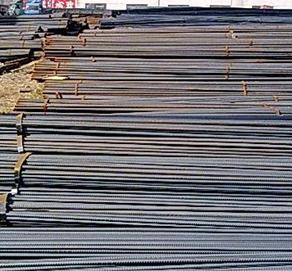
Nickel prices have risen sharply in recent months, and the underlying driver is worries about a large supply disruption. In January this year, Indonesia issued a ban on export of raw ore, while Indonesia’s nickel ore production accounted for about one-fifth of global production.
The move was prompted by Indonesia’s “Mining and Coal Law†(the “No. 4 Lawâ€), which was introduced in 2009. The law is intended to increase metallurgical production in Indonesia. With the gradual depletion of ore shipments, this situation is having a significant impact on the production of nickel-bearing pig iron in China. Since Indonesia's smelting capacity can be said to be “not enough,†nickel prices have risen more than 35% since the beginning of this year, climbing to a level above 18,700 USD/ton, hitting a 14-month high and preparing to find another round. Big opportunity.
At the same time, the developing political situation in Ukraine is also weighing on the nickel market. Analysts believe that the trade restrictions imposed by the West on Russia are constantly escalating, and this situation will push nickel prices higher.
A Closer Look at Market Supply-Demand Balance In fact, in recent weeks, Bank of America-Merrill raised its forecast for nickel prices in view of the difficult-to-solve production problems around the world. The bank also fully expects nickel prices to reach a high of 25,000 U.S. dollars within the next 12 months.
Bank of America Merrill believes that the ban imposed by Indonesia will push the nickel market into a trade deficit next year, although restrictions on Russian shipments in the coming months will pull stocks to very low levels. The bank said that "the possibility of sanctions against Russia has recently intensified the price increase, because Russia's supply accounts for 12% of global nickel production."
Bank of America Merrill added: "In the coming days, we will closely track the development of the situation in Ukraine, because any sanctions that may limit nickel shipments are very likely to increase nickel prices."
Russia's Norilsk Nickel is the only largest producer of the metal. The company produced 285,000 tons last year, which is more than 15% of the world's total production. The company, together with the energy giant Gazprom, is among those more likely to be subject to strict economic sanctions.
Bank of America Merrill Lynch Bank stated that the average nickel price in 2014 is expected to be US$16,091 per ton, up from US$15,034 last year, and will continue to rise afterwards. The average prices in 2015 and 2016 will reach US$17,839 and US$18,000, respectively. However, as long as Indonesia's original ore export ban continues to take effect and the increasingly intensified military operations in Eastern Europe have increased trade restrictions on Russia, the price of non-ferrous nickel will easily exceed these figures.
Demand continues to rise At the same time, with the help of improved financial conditions in Europe and continued improvement in the U.S. economy, the steady recovery in nickel demand is expected to exacerbate the tight supply and demand balance of the metal.
In particular, the stainless steel factory's booming production scene is expected to make this year's stainless steel production record high. The demand from the stainless steel industry accounts for about two-thirds of global nickel purchases. Indeed, the British metals consultancy MEPS expects that the total output of stainless steel in 2014 will once again set a new record, reaching 39.5 million tons, up 3.6% from the previous record of 38.1 million tons set last year.
Sucden Financial also agrees that strong natural economic growth will drive stainless steel demand, making non-ferrous metal nickel faster than most base metals. The broker believes that this situation “should stimulate nickel demand to continue to climb,†and “the interest in replenishment of consumers this year is likely to rise before the obvious trade deficit next year.â€
Right now, nickel inventory levels are still healthy. The inventory of the London Metal Exchange has steadily risen since 2011. Despite rising shipments in recent weeks, inventory levels are still close to the record high of 290,000 tons. At the same time, China expects Indonesia’s export ban and has been hoarding large quantities of raw ore for several months.
However, the export restrictions in Southeast Asia seem to continue, and the political situation in Ukraine seems to be greatly deteriorated. Accompanying these situations, nickel prices will further increase in the near future.
1. Technical standard: BS EN 10202, DIN EN 10203, GB/T2520 , JIS G3303
2. Steel type: MR, SPCC
3. Thickness: 0.115 - 0.50 mm
4. Width: 600 - 1050 mm
5. Length: 600-1200mm
Tin Coating: ordinary 2.8 or 2.8g and 5.6g or 5.6g, we can produce according to customer's requests
Excellent barrier property. Double pin hole dectecters during production, can 100% avoid pin hole defects.
Paint Bucket Tinplate,Paint Bucket Tin Cans,Tin Metal Bucket For Paint,Metal Paint Bucket
Jiangsu Guolian New Material Co., Ltd. , https://www.cntinplate.com